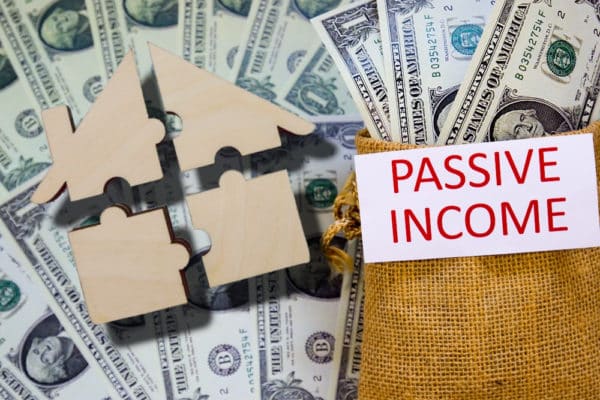If you aspire to build a diverse commercial investment portfolio, understanding the intricacies of commercial property leases is crucial. Whether you intend to rent out your business property or establish offices within bustling commercial complexes, the choice between investing in residential or commercial properties has long been a topic of debate among savvy investors. The divide between these options has fueled discussions for years. However, for discerning investors, the choice doesn’t have to be exclusive.
Enterprising investors can explore a hybrid approach, seamlessly incorporating both residential and commercial properties into their investment strategy. This flexibility allows you to draw from the best of both worlds, mixing residential and commercial assets to create a well-rounded portfolio. When making these decisions, it’s imperative to delve into various aspects such as lease abstract issues, evaluating options between purchasing and renting, or upgrading and selling properties.
Understanding your cash flow potential is paramount; it requires a meticulous assessment of your highest return on investment. In this pursuit, exploring innovative avenues such as buying mortgage notes, loan acquisitions, and leveraging services from Amerinote Xchange can empower investors to make informed and strategic choices. With commercial properties, investors can potentially earn robust gross yields, often ranging from 8-12%, demonstrating the lucrative possibilities within the realm of commercial real estate investment.
So, why should you choose to invest in commercial property? Well, we’ve got a few reasons for you below!
Understanding the Complex Risks in Commercial Property Investments
Investing in commercial properties presents an array of enticing opportunities, but it is crucial for investors to delve into the associated risks before making substantial financial commitments. Commercial properties are notably sensitive to economic conditions; during periods of economic growth, businesses flourish, increasing the demand for commercial spaces. However, when economic conditions falter, the demand for business properties can decline, leaving investors vulnerable to market fluctuations.
Prolonged Tenant Searches and Income Challenges in Commercial Real Estate
Finding suitable tenants is a challenge that property investors face, regardless of their chosen sector. However, the search for the right tenants tends to be more time-consuming in the commercial real estate market. While residential properties may experience vacancies for shorter durations, commercial spaces often remain unoccupied for extended periods. This prolonged vacancy can significantly impact an investor’s cash flow, necessitating proactive measures to maintain profitability. Commercial property owners must meticulously manage their investments, ensuring financial stability to cover costs during these vacancies, thereby safeguarding their income streams.
Vulnerability to Supply Fluctuations and Infrastructure Changes
Commercial properties operate within a delicate balance of supply and demand. Unlike residential properties, commercial spaces are influenced by market dynamics, where an increase in supply within a specific area can jeopardize existing tenancies. A surplus of available commercial properties can lead to decreased demand for individual spaces, affecting rental yields and overall profitability. Moreover, large-scale infrastructure changes in the vicinity can attract new commercial investments, luring tenants away from existing properties. This shift can result in vacant commercial spaces, causing financial instability for property owners. Investors must remain vigilant, closely monitoring market trends and infrastructure developments to make timely decisions that safeguard their investments.

Property Values and Lease Correlation in Commercial Real Estate
Over time, property values naturally undergo fluctuations influenced by various factors, including market demand, economic conditions, and lease agreements. In the realm of commercial real estate, the correlation between property values and lease agreements is significant. Vacancies or leases nearing expiration can impact property values, potentially leading to a decline in investment value. While these fluctuations can be unsettling, they are not irreversible. Strategic measures, such as renegotiating leases or making property enhancements, can help investors reclaim lost value. Conversely, in the residential sector, price falls tend to occur progressively over a more extended period, providing investors with a more gradual adjustment period.
Mitigating Risks and Informed Decision-Making in Commercial Property Investments
In navigating the multifaceted landscape of commercial property investments, understanding and mitigating these risks are paramount. Investors must conduct comprehensive market research, stay abreast of economic indicators, and proactively manage their properties to ensure long-term profitability. Engaging with reputable real estate professionals and leveraging online resources, including platforms for mortgage notes and loan acquisitions, empowers investors with valuable insights and opportunities. By making informed decisions, adopting proactive strategies, and remaining adaptable in response to market dynamics, investors can navigate the challenges posed by commercial property investments, maximizing their potential for sustainable financial success in this competitive sector.

Conclusion: Making Informed Investment Decisions
In the realm of real estate investments, the choice between commercial and residential properties is not a one-size-fits-all decision. Each option presents its unique advantages and challenges, requiring investors to carefully assess their current portfolio, financial goals, and risk tolerance. While commercial property offers the allure of long-term leases, cost efficiency, and potential high yields, they come with nuanced risks tied to economic fluctuations and market dynamics. Residential properties, on the other hand, provide stability but may yield slower returns. As investors weigh these factors, the key lies in informed decision-making.
By understanding the intricacies of both sectors and leveraging resources like mortgage notes and loan acquisitions, investors can navigate the market with confidence. Diligence, strategic planning, and adapting to evolving market conditions will empower investors to make prudent choices, ensuring a resilient and prosperous real estate investment journey.





